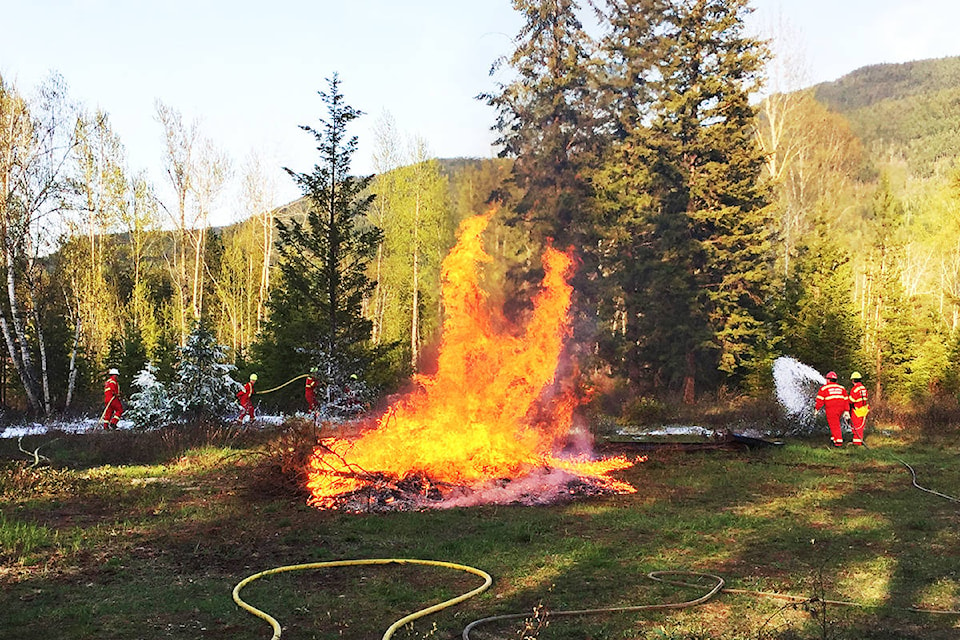Summer is on its way, which means so is wildfire season, and the District of Clearwater (DOC) has been preparing for any flare-ups that may happen in the drier months ahead.
One of the highlights for this year’s wildfire preparation includes success with a grant funding request, netting $35,000 toward the district’s Community Wildfire Protection Plan.
“We applied for the grant through the Community Resiliency Investment Fund. We wanted to apply for grants to work on some fuel mitigation around the community because we did extensive work in 2009 to 2011 when we mitigated more than 327 hectares of land,” said Leslie Groulx, chief administrative officer for the DOC.
“We’d like to get out there to maintain some of it, but the ministry asked if we’d update our Wildfire Protection Plan first because it’s from 2012 and we have seven years that saw some changes.”
The update involves going through the 2012 plan and reassessing risks in the neighbourhoods around Clearwater, as well as the corridor up to the Wells Gray Park Boundary.
Other initiatives in the plan had members of the DOC educating the public on FireSmarting properties, presenting demonstrations in the various neighourhoods, handing out information at the Farmers Markets, holding an Emergency Management Week and updating equipment for the local fire department.
“Once we do (the update), then we’ll have recommendations and we can start applying for funding through Forest Investment and the Community Resiliency Fund to start doing some more fuel mitigation,” said Groulx, adding the district is also working toward more FireSmart education sessions and initiatives for this season.
With the wildfires getting worse the last few years, the district also tries to make more green spaces in the area, and during previous fuel mitigation activities, worked along the power line in consultation with BC Hydro to provide a significant fuel break where fire would have a harder time spreading.
Mutual aid agreements with Blackpool and Vavenby are also up for renewal as they expire on June 30, and once renewed the three fire departments can continue cohesive protection of the area.
“What that means is if there’s a fire in Blackpool and they need some aid, we have a mutual agreement in place already, so we can send some of our firefighters down to help them and the same with Vavenby and vice versa,” Groulx said.
“And we’re also all required to stay on the same training level, which is really effective for everybody because all three fire departments can keep a higher level of training—the recommendation is going to council to renew it.”
It should be noted that when firefighters are sent to different areas, there’s always enough members left behind to protect the town its department is located in.
“Then we also have an automatic aid agreement with the Ministry of Forests and BC WildFire; an example is a few years ago, there was a fire in East Blackpool that was beyond our municipal boundary, and BC WildFire couldn’t respond immediately, so we sent out a tender of firefighters, they get on scene first and get paid for that and it’s called auto aid,” said Groulx.
“A lot of people don’t realize how closely our fire departments work together, but the policy is they have to call the CAO before they can leave and they always leave behind enough firefighters to cover the town.”
Some tips for residents to keep their own properties safer include swapping out roofing if it’s made of material like cedar shakes to something more heat resistant like tin or asphalt, clearing brush from under trees on the property as well as de-limbing them away from the ground.
